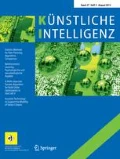Abstract
Humanoid robots with many degrees of freedom have an enormous range of possible motions. To be able to move in complex environments and dexterously manipulate objects, humanoid robots must be capable of creating and executing complex sequences of motions to accomplish their tasks. For soccer playing robots (e.g., the participants of RoboCup), the highly dynamic environment require real-time motion planning in spite of the enormous search space of possible motions. In this research, we propose a practical solution to the general movers problem in the context of motion planning for robots. The proposed robot motion planner uses a sample-based tree planner combined with an incremental simulator that models not only collisions, but also the dynamics of the motion. Thus it can ensure that the robot will be dynamically stable while executing the motion. The effectiveness of the robot motion planner is demonstrated both in simulation and on a real robot, using a variation of the Rapidly Exploring Random Tree (RRT) type of motion planner. The results of our empirical evaluation show that CONNECT works better than EXTEND versions of the RRT algorithms in simple domains, but that this advantage disappears in more obstacle-filled environments. The evaluation also shows that our motion planning system is able to find and execute complex motion plans for a small humanoid robot.






Similar content being viewed by others
References
Berenson D, Srinivasa S (2010) Probabilistically complete planning with end-effector pose constraints. In: Proceedings of ICRA
Geraerts R, Overmars MH (2002) A comparative study of probabilistic roadmap planners. In: Workshop on the Algorithmic Foundations of, Robotics, pp 43–57
Hsu D, Latombe J-C, Kurniawati H (2007) On the probabilistic foundations of probabilistic roadmap planning. In: Thrun S, Brooks R, Durrant-Whyte H (eds) Robotics research. Springer tracts in advanced robotics, vol 28. Springer, Berlin, Heidelberg, pp 83–97
Jaillet L, Simeon T (2004) A PRM-based motion planner for dynamically changing environments. In: Proceedings of IROS 2004, vol 2, pp 1606–1611
Karaman S, Frazzoli E (2011) Sampling-based algorithms for optimal motion planning. Int J Rob Res 30(7):846–894
Kavraki LE, Latombe JC, Motwani R, Raghavan P (1995) Randomized query processing in robot path planning (extended abstract). J Comput Syst Sci:353–362
Kavraki LE, Svestka P, Latombe J-C, Overmars MH (1996) Probabilistic roadmaps for path planning in high-dimensional configuration spaces. IEEE Trans Robot Autom 12(4):566–580
Kuffner Jr. JJ, Kagami S, Nishiwaki K, Inaba M, Inoue H (2002) Dynamically-stable motion planning for humanoid robots. Auton Robot 12(1):105–118
Kuffner Jr. JJ, LaValle SM (2000) RRT-Connect: An efficient approach to single-query path planning. In: Proc. IEEE Intl Conf. on Robotics and Automation, pp 995–1001
LaValle SM (1998) Rapidly-exploring random trees: A new tool for path planning. Technical report, Carnegie Mellon University
LaValle SM, Kuffner Jr. JJ (2000) Rapidly-exploring random trees: progress and prospects. In: Algorithmic and Computational Robotics: New Directions, pp 293–308
Lindemann SR, LaValle SM (2004) Incrementally reducing dispersion by increasing voronoi bias in RRTs. In: Proceedings of ICRA 2004, vol 4, pp 3251–3257
Lozano-Perez T (1980) Spatial planning: a configuration space approach
Reif JH (1979) Complexity of the mover’s problem and generalizations. In: SFCS ’79: Proceedings of the 20th Annual Symposium on Foundations of Computer Science. IEEE Computer Society, Washington, DC, pp 421–427
Selig JM (1992) Introductory robotics. Prentice hall, USA
Spong MW, Hutchinson S, Vidyasagar M (2005) Robot modeling and control, chapter 3. Wiley, New York, pp 73–110
Sucan I, Kavraki LE (2012) A sampling-based tree planner for systems with complex dynamics. IEEE Trans Robot 28(1):116–131
Tsianos KI, Sucan IA, Kavraki LE (2007) Sampling-based robot motion planning: towards realistic applications. Comput Sci Rev 1:2–11
Urmson C, Simmons R (2003) Approaches for heuristically biasing RRT growth. In: Proceedings of IROS
Author information
Authors and Affiliations
Corresponding author
Rights and permissions
About this article
Cite this article
Baltes, J., Bagot, J., Sadeghnejad, S. et al. Full-Body Motion Planning for Humanoid Robots using Rapidly Exploring Random Trees. Künstl Intell 30, 245–255 (2016). https://doi.org/10.1007/s13218-016-0450-z
Received:
Accepted:
Published:
Issue Date:
DOI: https://doi.org/10.1007/s13218-016-0450-z



